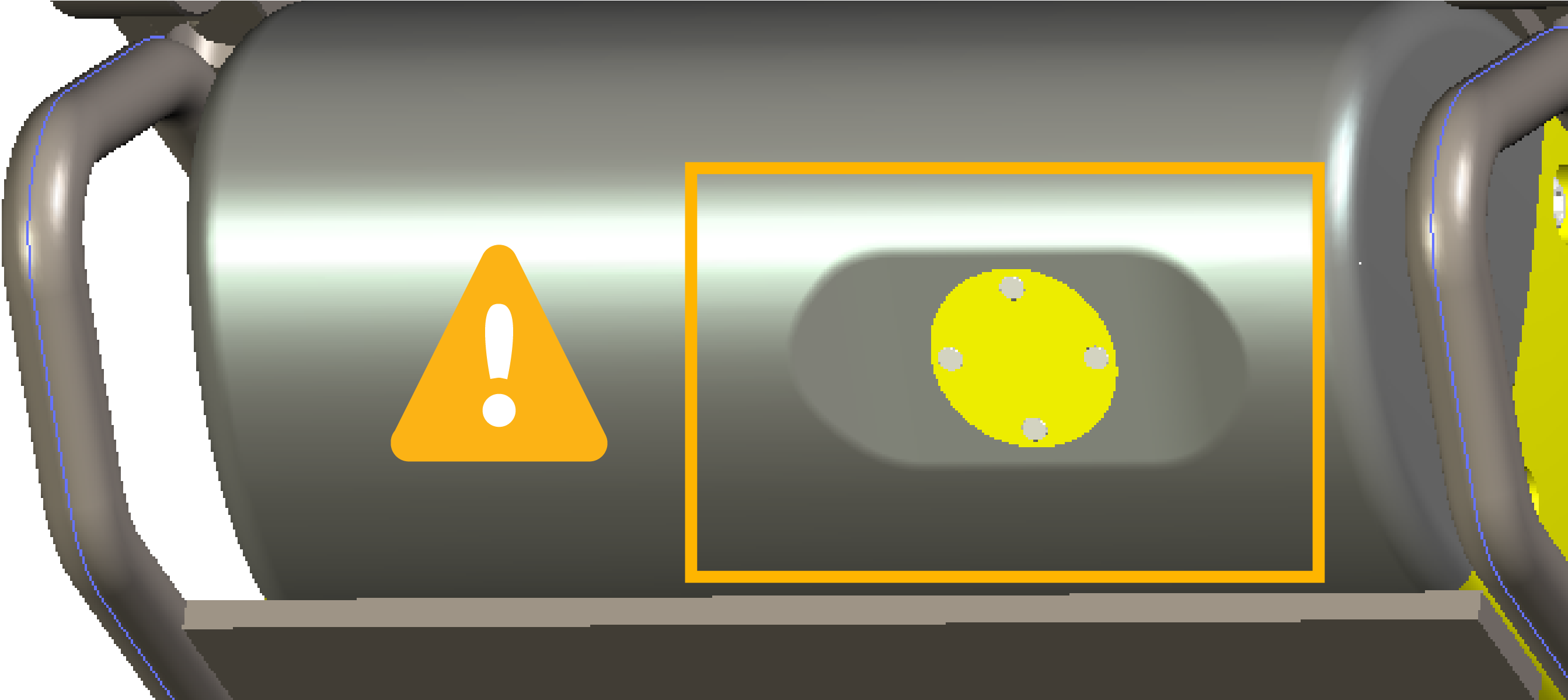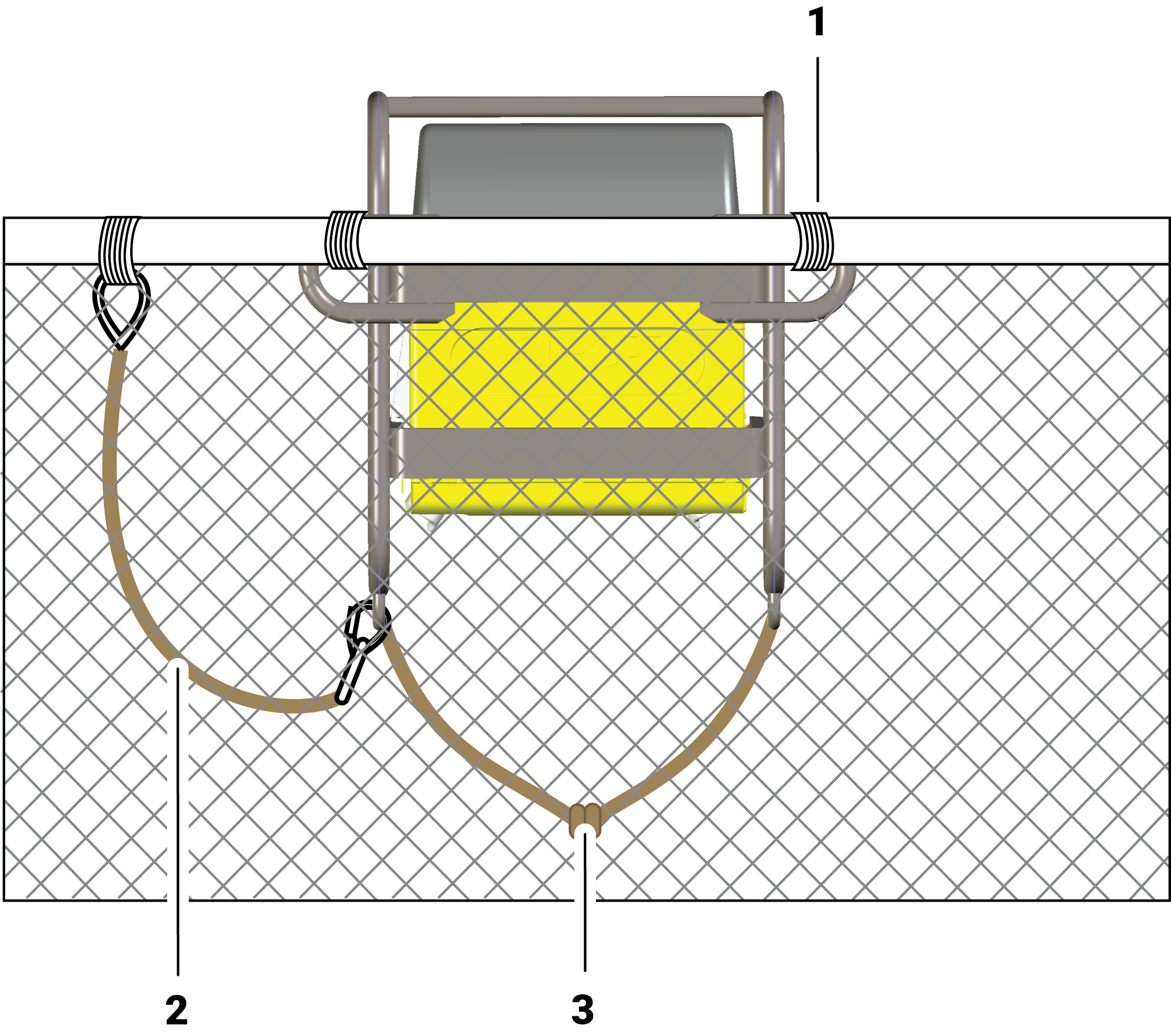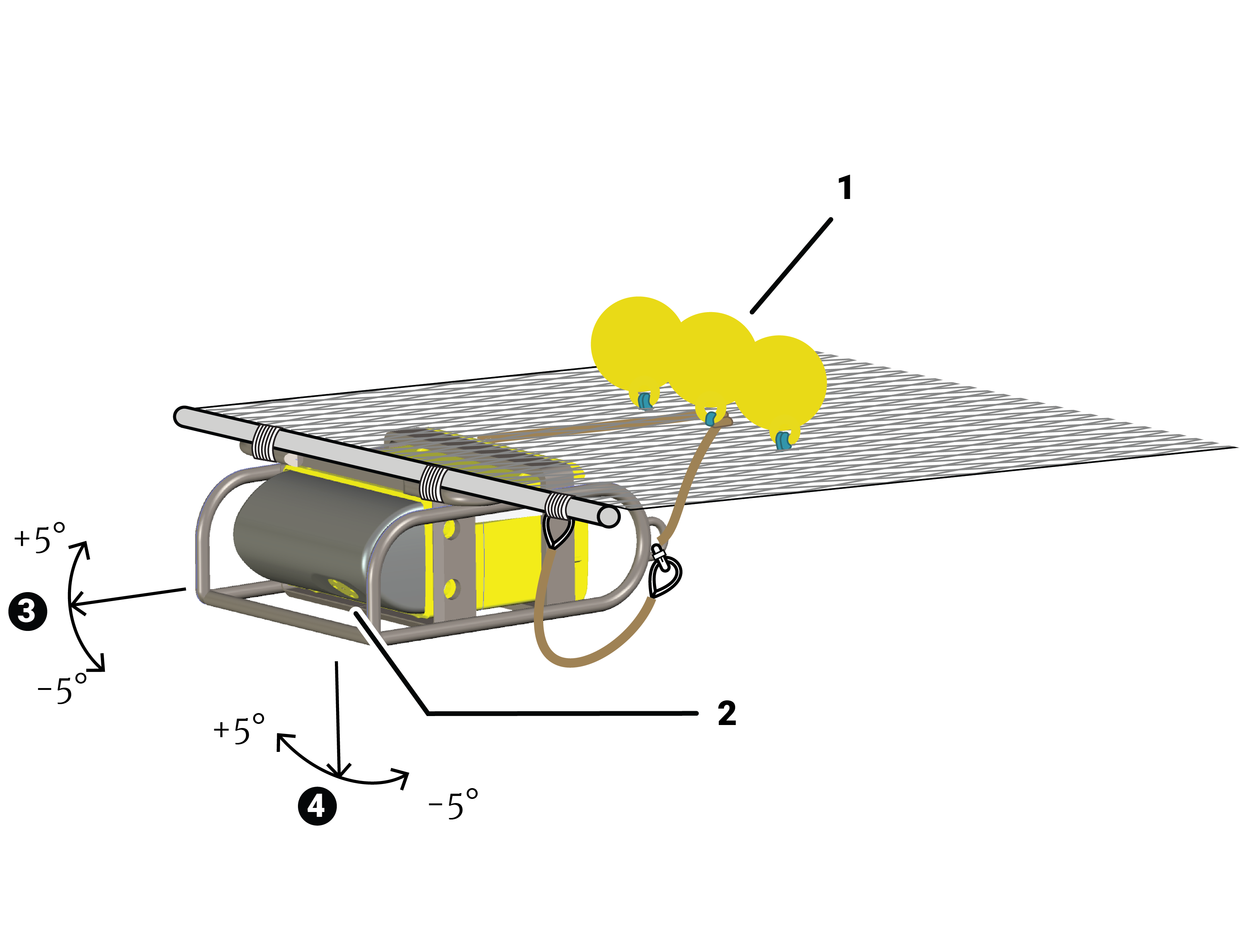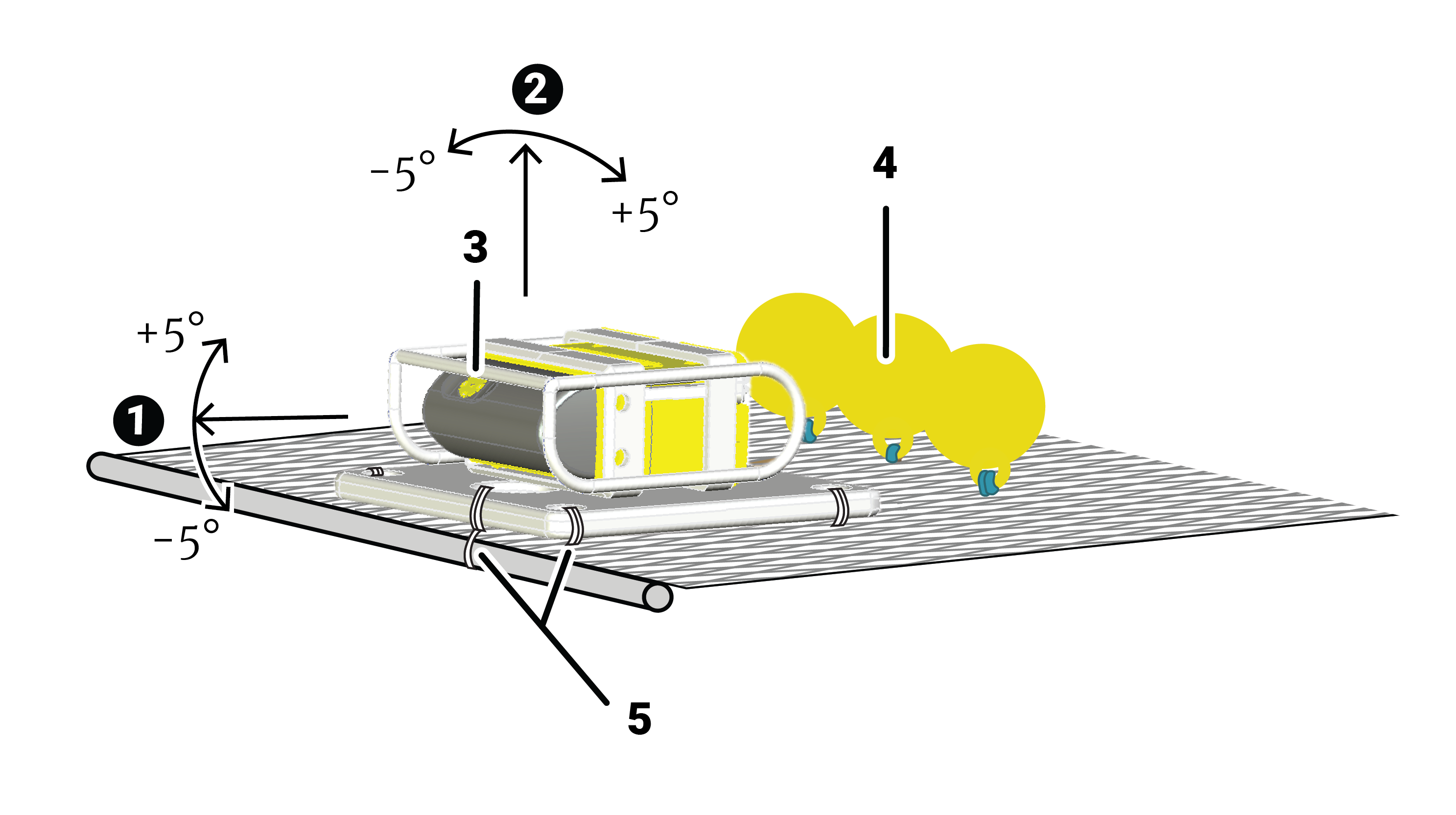Installing the Sensor on the Trawl
Follow these guidelines to install a Speed Navigator in standard or reversed configuration.

Handling precaution and a good maintenance of the EM log head is essential for the proper operation and lifetime of the flow sensors. Make sure to always use a protective cage when using the sensor. The protective cage must be approved by Marport. Any additional protective devices installed in front of the head may disrupt the flow and therefore alter the water speed measurements.
Even when the sensor is protected with a cage, make sure the head of the sensor does not hit any rail or protruding object when hauling the trawl on deck.

When the sensor is installed on the headrope, you may not see the footrope. If you want to see it, move back the sensor of a few meters.
The sensor must be placed in a way that there is less than +/- 5 degrees of pitch and roll. You may need to add floats to the back of the sensor to achieve this.
Standard Installation
The Speed Navigator is placed below the headrope, EM log pins facing down.
 |
1. Cage attached to the
headrope 2. Safety wire with small shackles on both ends to secure the sensor 3. Rope passing between 2 housing attachment lugs and attached to the net |
 |
1. Floats at the back help stabilizing
the pitch and roll of the sensor. 2. EM log pins facing down. Make sure nothing is in front (rope, floats): it would impede its signal. 3. Maximum pitch + 5° / - 5° 4. Maximum roll + 5° / - 5° |
Reversed Installation
In this installation, the EM log pins face up instead of down. In this case, the Speed Navigator is installed on a board to provide more stability. The aim of this installation is to prevent the EM log pins and transducer to hit the deck when the trawl is hauled.
 |
1. Maximum pitch + 5° / - 5° 2. Maximum roll + 5° / - 5° 3. EM log pins facing up. Make sure nothing is in front (rope, floats): it would impede its signal. 4. Floats at the back help stabilizing the pitch and roll of the sensor. 5. Ropes attaching the board to the headline and net. |
